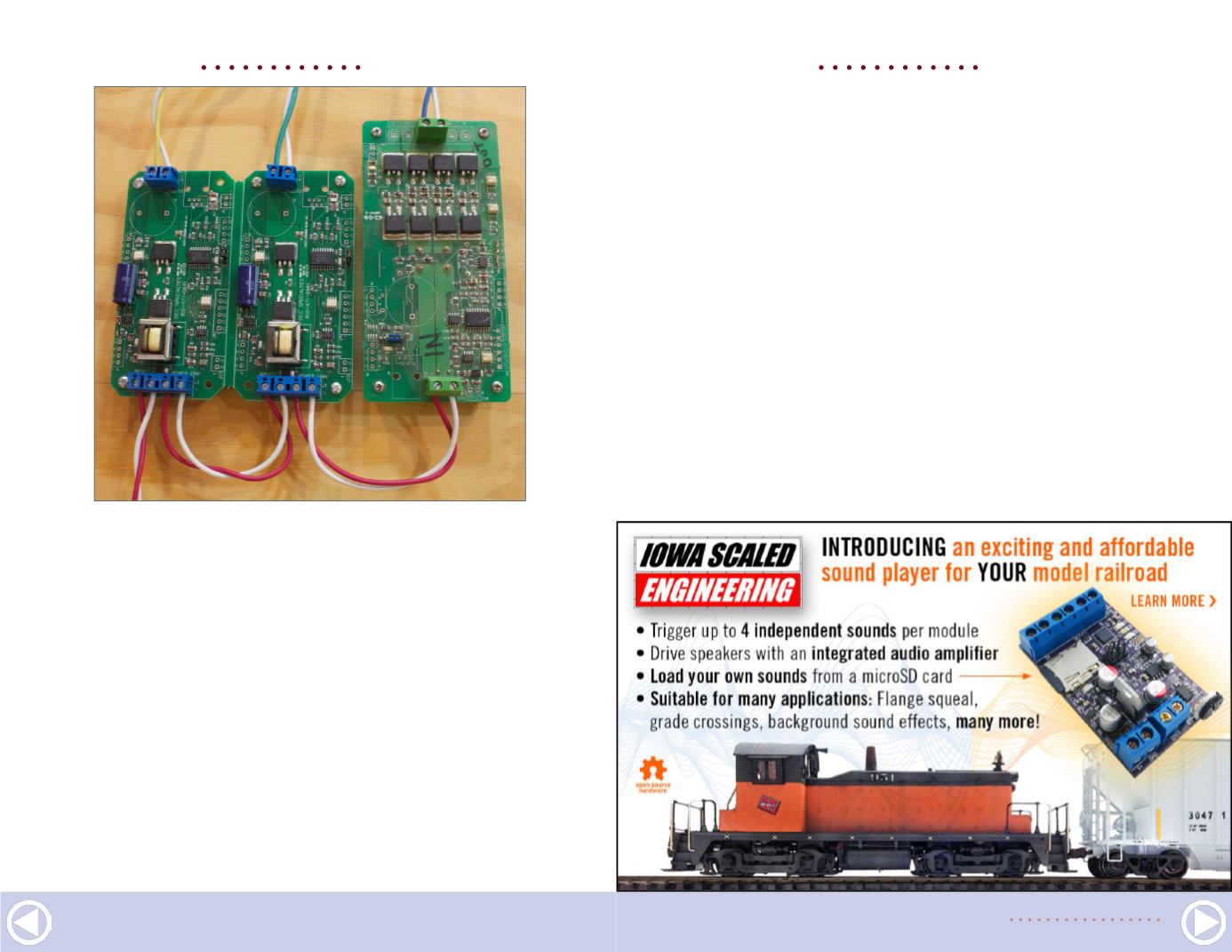
DCC IMPULSES |
10
on both ends of the loop it will just toggle back and forth and get
very confused.
There are lots of discussions on the web about how to cheat this,
with plastic wheels, etc. But they are all just patches. If you truly
want smooth and reliable operation, make sure that there is no
possible way for a train to be entering and leaving the loop at the
same time. Or for that matter, for a second train to be entering
the loop when another is leaving.
Similarly, I’ve seen folks try to save a couple of bucks and run
two different loops off the same auto-reverser. Not a good idea.
7. Wiring circuit breakers and an auto-reverser. Here is the
preliminary wiring for the control board for the RMP. See text.
Bruce Petrarca photo
DCC IMPULSES |
11
It is just a matter of time before two trains are competing for
track controlled by the single module.
The next hint is how the double gapping is achieved. Many
modelers get almost anal-retentive on getting the rail joiners
directly across from each other. While this is an esthetic thing
for conductive joiners, it is counterproductive when providing
insulated gaps for auto-reversers.
If gaps are directly across from each other, the auto-reverser
may be confused. If the wheels hit the gaps at slightly different
times, the auto-reverser may sense the first short and reverse
in time to catch the second short. The short may persist long
enough to shut down a circuit breaker. Staggering the gaps
makes it such that the first wheel to hit a gap activates the
auto-reverser. It will be a bit of time before the opposite wheel
hits the second gap. No problem.
ADVERT I SEMENT


